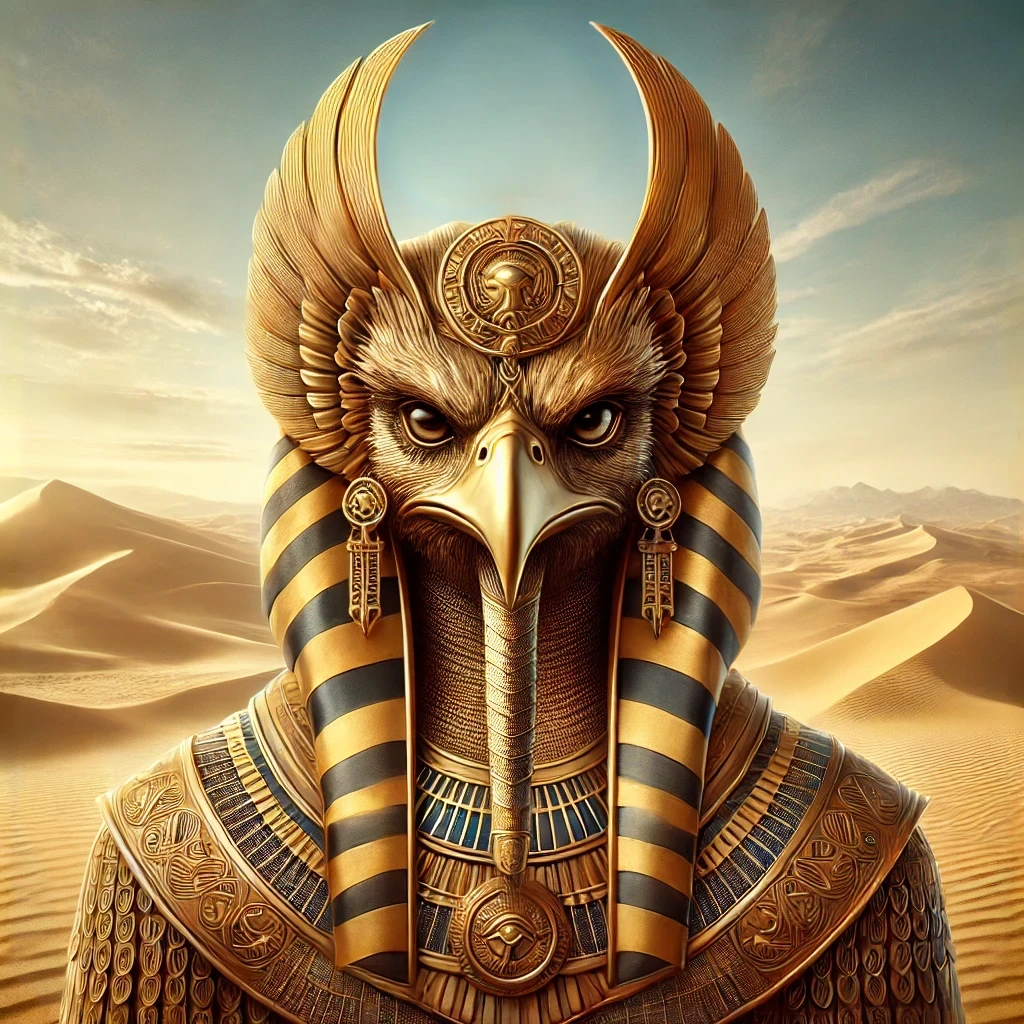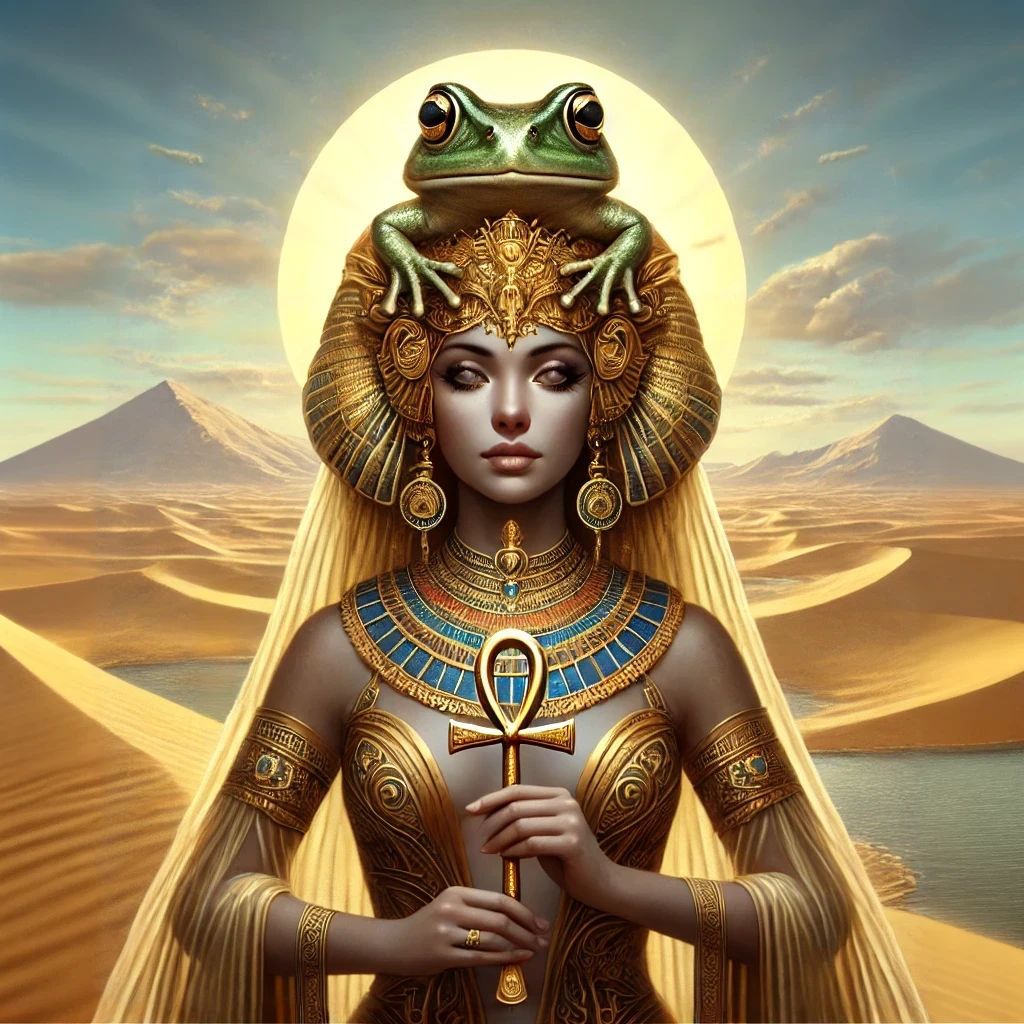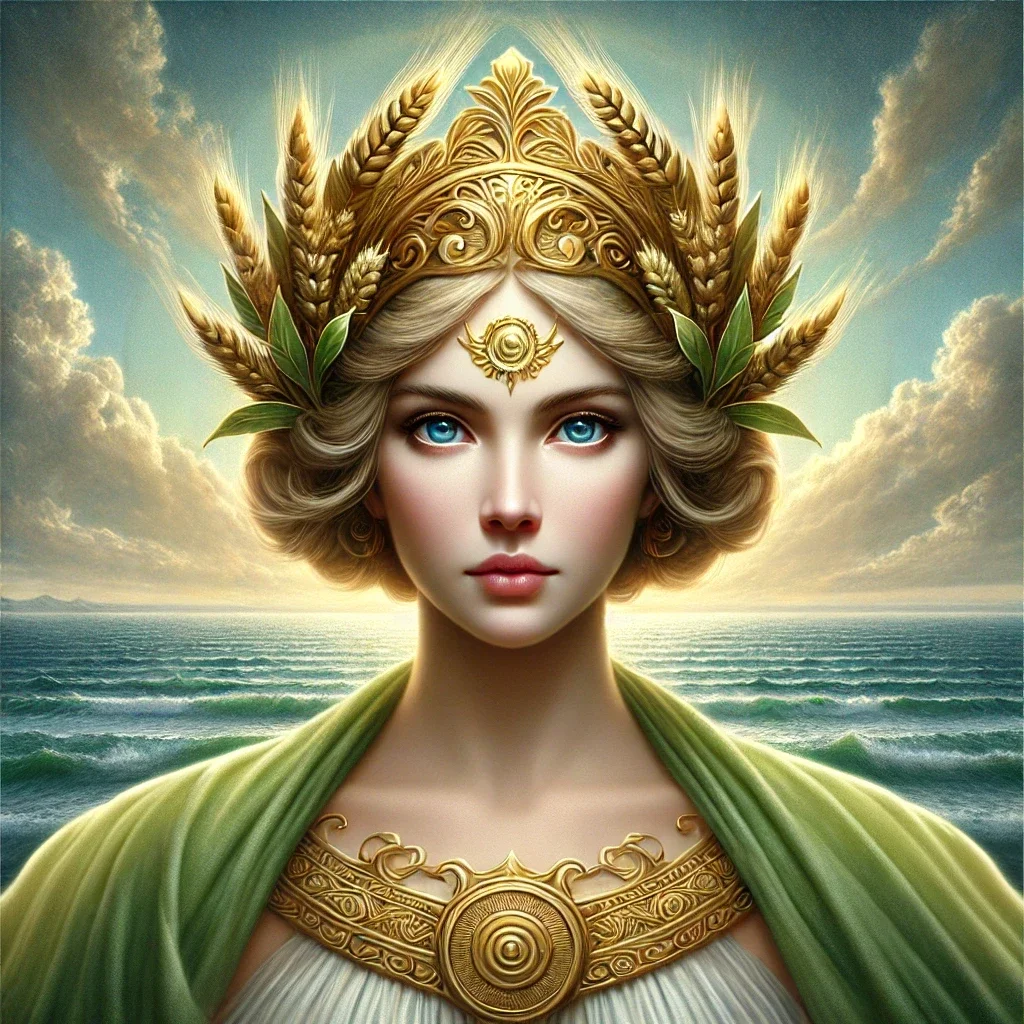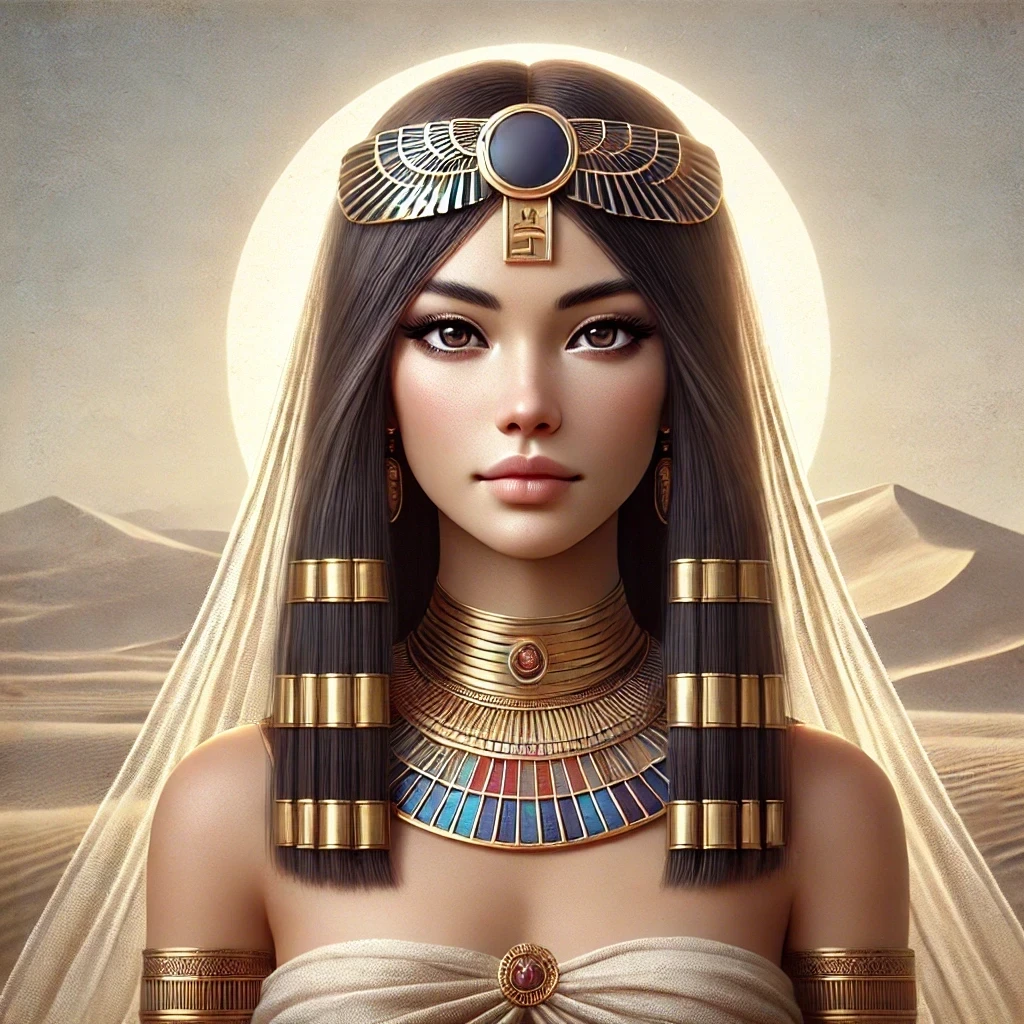Horus, also known by alternative names such as Heru, Hor, or Har, holds a significant position in ancient Egyptian mythology. Revered as the god of kingship and the sky, he is often referred to by epithets like “The Avenger of His Father” and “The Protector of Egypt.” The name Horus, derived from the Egyptian word “Hr,” translates to “the one who is above” or “the distant one,” reflecting his celestial domain.

Origins
The origins of this deity trace back to the Predynastic Period of Egypt (c. 6000–3150 BCE). He emerged as a central figure in Egyptian belief, embodying the dual role of divine ruler and cosmic force.
Early Worship
Horus’ earliest depictions date to the Naqada culture, where he was associated with falcons, a bird revered for its commanding presence in the skies. By the Old Kingdom, he was firmly entrenched as a symbol of pharaonic authority, with the reigning king considered his earthly manifestation.
Evolution Across Dynasties
Over time, his persona evolved, intertwining with other gods. The falcon-headed deity became a composite figure, merging with Ra to form Ra-Horakhty, the god of the rising sun. This adaptation highlighted the fluidity of Egyptian religious practices, as his identity absorbed regional variations and broader cosmic themes.
Appearance
The visual representation of this god often reflects his connection to the sky and kingship.
Iconography
Typically depicted as a falcon or a man with a falcon’s head, he wears the double crown of Upper and Lower Egypt, symbolizing unification. His sharp gaze mirrors the bird’s keen vision, a metaphor for vigilance and power.
Unique Depictions
In some representations, he appears as a winged sun disk or a child seated on a lotus flower, signifying rebirth and cosmic order. These variations underline his diverse attributes and roles within Egyptian culture.

Abilities
This celestial ruler’s powers extend across realms, encompassing protection, vengeance, and restoration.
Protector of Pharaohs
As the patron deity of kings, Horus safeguarded the monarchy. His prowess ensured stability, with the pharaoh embodying his spirit to maintain maat, the concept of cosmic balance.
Divine Avenger
He is best known for avenging the murder of his father, Osiris, by battling his uncle Set. This epic struggle represents the triumph of order over chaos, a recurring theme in Egyptian mythology.
Sky Deity
The god’s celestial domain granted him the ability to control the skies. His eyes were linked to the sun and moon, with the “Eye of Horus” becoming a potent symbol of protection and healing.
Myths
The mythology surrounding this falcon-headed figure is rich with narratives that intertwine divine drama and moral lessons.
The Contendings of Horus and Set
One of the most famous myths details his conflict with Set over the throne of Egypt. Spanning eighty years, their battles included contests of strength, wit, and endurance. Ultimately, the Ennead, a council of gods, declared him the rightful heir, solidifying his association with kingship.
The Healing of His Eye
In the aftermath of his battle with Set, his left eye, representing the moon, was injured. Restored by Thoth, the act of healing imbued the “Eye of Horus” with protective and regenerative qualities, making it a symbol of health and restoration.
Birth and Divine Protection
As a child of Isis and Osiris, he was hidden in the papyrus thickets of the Nile Delta to protect him from Set’s wrath. This narrative underscores his role as a divine protector and avenger, shaped by early challenges.

Symbolism
The deity’s symbolic associations extend beyond mythology into tangible objects, animals, and celestial phenomena.
Sacred Animals
The falcon epitomizes his connection to the sky, embodying precision and dominance. The cobra, often depicted alongside him, reinforces his protective role, particularly in the context of royal regalia.
Iconic Objects
The “Eye of Horus,” or Wedjat, symbolizes protection, health, and restoration. Amulets bearing this symbol were common, serving as talismans for the living and the dead.
Celestial Significance
His association with the sun and moon highlights his dual role in maintaining cosmic order. The right eye represents the sun, embodying light and creation, while the left eye signifies the moon, symbolizing renewal and healing.
Relationships
This divine figure’s connections to other deities and beings underscore his central role in Egyptian cosmology.
Parentage and Family
As the son of Osiris and Isis, he inherits the mantle of avenger and protector. His close bond with his mother, who shielded and guided him, is a recurring theme in mythological narratives.
Rivalry with Set
The antagonistic relationship with Set is emblematic of the struggle between order and chaos. Their battles are not only physical but also symbolic, representing broader cosmic conflicts.
Allied Deities
He is often depicted alongside Thoth and Hathor. Thoth’s role in healing his eye highlights their collaboration, while Hathor’s nurturing presence complements his martial and regal attributes.
Trivia
- The “Eye of Horus” inspired modern mathematical concepts, with its parts representing fractions used in ancient measurements.
- The deity’s name influenced the word “horizon,” linking him to the rising and setting of celestial bodies.
- Early Coptic Christians adapted his imagery, portraying him as the infant Christ in depictions resembling Isis nursing him.
- His temple at Edfu, one of the best-preserved ancient structures, served as a major pilgrimage site and ritual center.
- Ancient sailors invoked his protection, believing the falcon god guided them safely across treacherous waters.



